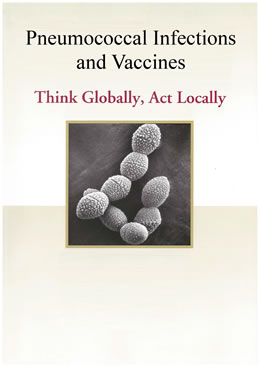Greetings
At the “Joint Meeting of the 91st Meeting of the Japanese Association for Infectious Diseases and the 65th Meeting of the Japanese Society of Chemotherapy” held in April 2017, we had an opportunity to deliver a lecture titled “The Latest Developments in Pneumococcal Vaccines - Think Globally, Act Locally -” as a Luncheon Seminar 23. Owing to the extensive contents of the lecture, covering basics to clinical aspects, we compiled all the contents in a booklet for a thorough understanding of the contents and distributed it as a part of the enlightenment activities.
It was approximately 3 years after the “7-valent pneumococcal conjugate vaccine (PCV7)” was switched to the “13-valent pneumococcal conjugate vaccine (PCV13)” in children. Unfortunately, a part of the analysis of the basic data was not available at that time. After completion of the analysis of all strains collected during the period from FY2010 to FY2016, we prepared a research paper as the 7‑year molecular epidemiology study and submitted it to Journal of “Emerging Infectious Diseases (EID),” which was fortunately accepted. Based on these complete data, we have revised the actual status of pneumococcal infections in Japan and why vaccines are needed.
After World War II, until the appearance of penicillin, an antibiotic, pneumococcal pneumonia that developed suddenly in the community was a highly fatal infection even in young population. Looking back, immense development of antimicrobial agents in Japan has offered many benefits. The organization of social infrastructure, together with easy medical access supported by Japan’s National Health Insurance system, led to the world’s unprecedented super-aging society.
However, today, we are facing issues that cannot be addressed by the proper use of antimicrobial agents alone.
In our aging society, some infections, such as pneumococcal infection and streptococcal infection, follow a rapid clinical course. If vaccines are available for the prevention of the onset of these infections, vaccinations should be performed per the principle of “population prophylaxis of infections”. Unlike in children, individual immunity level differs markedly among middle-aged and older adults depending on the presence or absence of underlying diseases. We must accept and respond to the fact that “aging is not only associated with a decline in physical function but also with a decline in immune function at the cellular level.”
We hope that this booklet, which summarizes our research achievements on the basics and clinical aspects of Streptococcus pneumoniae in an easy-to-understand manner, would help you understand “Pneumococcal Infections and Vaccines” better.
March 1, 2019 Ubukata (responsible for drafting this article), Iwata, Ishii, and Hanada.
December, 2019 Translation into English was performed with Wajima (PhD) as a contributor.
Note:
Note: If you wish to use figures and tables listed in this website, please contact us.
All rights reserved.

